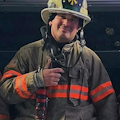Speed, Surprise and Violence of Action: Applying a Combat Mindset to the Fire Service
From rank structure, to brotherhood, to physical fitness, there are numerous similarities between the fire service and the military. Operating in different, although not dissimilar, austere environments necessitates some parity of the approach to duties between firefighters and members of the military.
The Marine Corps created the MCDP 1 Warfighting manual to address the mindset that it wants its members to exhibit when they prepare for combat. Central to its implementation are the tenets of speed, surprise and boldness, or, as is commonly heard now, speed, surprise and violence of action. These are echoed by soldiers, police officers and direct action responders, and they translate well to the fire service.
Speed
Speed is paramount to the success of firefighters. Turning out quickly, expedited response routes, stretching effectively and proficiency at all levels of task completion contribute to the speed with which we operate. “Seconds matter” is echoed at every level of the fire service, from the training academy to the fire chief’s justification for a new procedure or piece of equipment.
Speed is why there was such trepidation about the Clean Cab initiative. It’s why preconnected hoselines were popularized. It’s why we get flashing lights and sirens on our rigs.
With fires growing and spreading faster than they ever did, it now is even more important to operate with speed at the forefront. This doesn’t just mean moving as fast as possible, but being purposeful, too. Know where equipment is on your rig to avoid the engine merry-go-round. Practice fireground skills with your gloves on. Mask up with gloves on. Throw ladders efficiently. The seconds that you lose aren’t yours; they belong to the victims. The longer that it takes you to perform your job, the less likely that the victims are to survive and/or the more property that’s destroyed.
Surprise
MCDP 1 defines surprise as “a state of disorientation resulting from an unexpected event that degrades the enemy’s ability to resist.” Although you might not be able to “surprise” a fire, what you can do is control your environment. This control minimizes the fire’s capability to surprise you and contributes to an operational tempo that the fire can’t resist.
Your operations and tactics should create situations where you “own” your progress. Cribbing a lift on a vehicle rescue or flowing and repositioning to prevent fire from moving behind the advance of a handline are ways to exemplify this. To quote Chief Kyle Romagus, we “take, make and maintain survivable space” for both you and your victims. It’s all in an effort to control your environment. Don’t let the situation dictate what happens next. Your actions progress the incident to its conclusion.
Violence of action
Be aggressive in everything that you do, but intelligently so. Gen. George S. Patton famously said, “A good plan, violently executed now, is better than a perfect plan next week.”
As a firefighter, if you show up to a fire and do nothing, the fire eventually will go out, but that isn’t what the public expects nor deserves. In deciding what to do, you must make time-compressed decisions with limited information, or, as some have called it, precision guesswork. In other words, you must do something. You must take action to save lives and property.
Establish a plan that’s based on the best information that’s available at the time and execute. This is the aggressiveness that the fire service extolls. MCDP 1 terms this as “boldness.”
You must avoid the what-if trap and analysis paralysis: You can hope for more information, but it isn’t likely to come without wasting precious time and initiative.
This concept also might be seen through the lens of overwhelming the situation (enemy). Maximizing your fire stream and completely overpowering the BTUs is how you win. Put another way, and in a nod to EMS, if you search for every pinhole in a trauma patient before you treat the individual, you might find every injury, but the patient will bleed to death before you apply the first bandage.
Getting there
Applying a combat mindset to the fire service is the result of understanding that when you respond to an incident, it’s your next battle. Whether it’s a fire, a vehicle accident or an EMS call, your mindset heavily influences how the call progresses.
Training not only for proficiency but mastery saves time, makes you efficient and, by extension, allows you to be more aggressive.
Understand the situation that’s presented and the risks that are involved but also the best way to mitigate the issue and to save lives and property.
Develop a rhythm in your actions and be proficient at task-level operations.
It all starts in the firehouse and on the training ground. Once the bell rings or the tones drop, the time for preparation is over. It’s time to act.
As a last nod to the Marine Corps, the mission of a Marine infantry squad is to locate, close with and destroy the enemy by fire and close maneuver. Let us, as firefighters, save savable victims and locate, close with and kill the fire by overwhelming gpms.
Be safe. Be decisive. Kill the fire.
About the Author

Bradley Feely
Bradley Feely is a 19-year veteran of the fire service. He is the current training chief for the Cohocton, NY, Hook & Ladder Company and a captain with the Veterans Affairs Fire Department in Canandaigua, NY. Feely’s career began as an Explorer with the Cohocton Fire Department. He also served with the Beaufort/Port Royal, SC, Fire Department and the Maysville, NC, Fire Department. Feely served for nine years in the U.S. Navy as a fleet marine force corpsman. He is the owner/operator of Parabellum Fire Training.
